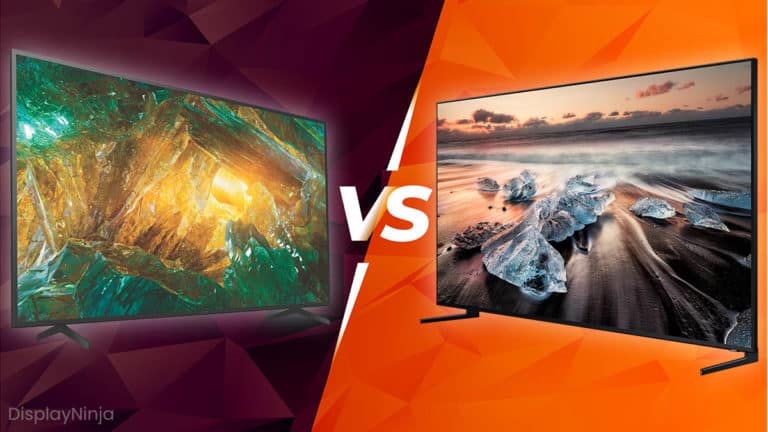From smoother motion to reduced screen tearing, the advantages of a higher refresh rate like 120Hz are undeniable in certain scenarios. However, does it always justify the cost? In this guide, we’ll explore everything you need to know about 60Hz vs 120Hz, including their practical applications, benefits, and limitations, helping you decide which gaming monitor is best suited for your requirements.
What Does Refresh Rate Mean for Monitors and TVs?
Defining Refresh Rate for Beginners
Refresh rate refers to the number of times a display updates the image on the screen per second, measured in hertz (Hz). For example, a 60Hz monitor refreshes the screen 60 times per second, while a 120Hz monitor refreshes it 120 times per second. This plays a crucial role in determining how smooth motion appears on the screen, especially for fast-moving content.
The impact of refresh rate is noticeable to the human eye, particularly when viewing fast-paced content like first-person shooters or watching videos with high frame rates. A higher refresh rate contributes to smoother motion and less noticeable visual interruptions. Additionally, understanding native frame rate is important. It refers to the actual frame rate of the content being displayed, which interacts with the monitor’s refresh rate; most of them are under $600. For instance, if a video has a standard frame rate of 30fps, a higher refresh rate monitor will still display the content, but won’t fully utilize its capabilities.
Application Across Devices
Refresh rates are not limited to monitors; they also apply to other devices like modern TVs, smartphones, and tablets. Modern TVs, including OLED TVs, are often designed with higher refresh rates to enhance the viewing experience for sports, action movies, or even competitive gaming on consoles. For example, a 60Hz TV is sufficient for watching standard TV shows or movies, but a 120Hz TV provides smoother motion and less motion blur, making it ideal for fast-paced content.
When comparing TV vs monitor refresh rates, monitors generally offer more precise performance for gaming or professional use. Devices like the iPad Pro and high-end smartphones have adopted higher refresh rates to provide a smoother scrolling and responsive viewing experience. These technological advancements show how important refresh rate has become in delivering better image quality and smoother visuals across a variety of screens.
Must Read: https://tododisca.com/
60Hz vs 120Hz Monitors: The Core Differences
The differences between 60Hz and 120Hz monitors become apparent when examining their impact on individual frames and overall motion clarity. A 120Hz monitor can display double the number of frames per second compared to a 60Hz monitor, resulting in smoother visuals and a more fluid experience. This is especially beneficial for fast-moving objects, where the added frames make motion appear less choppy and more natural.
One of the most noticeable advantages of a 120Hz monitor is the reduction in motion blur and screen tearing. Motion blur occurs when fast-moving objects leave a trail or appear smeared on the screen, while screen tearing happens when the monitor’s refresh rate is out of sync with the frame rate of the game or video. A higher refresh rate monitor like 120Hz minimizes these issues by refreshing the screen more frequently, aligning better with high fps content.
In real-world use cases, the higher refresh rate of 120Hz provides a significant impact in scenarios like gaming, video editing, and watching high frame rate videos. Competitive gamers, for instance, rely on the smoother experience of a 120Hz monitor to gain a competitive edge in fps games or fighting games. The faster refresh rate ensures lower input lag and a more responsive experience, which is critical in fast-paced content where milliseconds can make a difference.
On the other hand, a 60Hz monitor is more suited for general use, such as office work, casual gaming, or watching standard video content. While it provides a standard refresh rate sufficient for most tasks, the differences become noticeable when transitioning to a 120Hz monitor for demanding activities. This makes it important to consider your type of content and specific needs when choosing between the two.
Advantages of a 120Hz Monitor
For Gaming and Competitive Gamers
One of the primary advantages of a 120Hz monitor is its ability to significantly enhance gaming performance, especially for competitive gamers. In fast-paced games such as first-person shooters, fighting games, or other competitive games, a higher refresh rate provides a smoother gaming experience. This is due to the ability of a 120Hz monitor to display more frames per second, resulting in a more immersive gaming experience.
Competitive gamers also benefit from the lower input lag that 120Hz monitors offer. Input lag refers to the delay between a user’s action, such as pressing a key or moving the mouse, and the corresponding response on the screen. A 120Hz monitor reduces this delay, giving players a competitive edge by allowing them to react faster to in-game events. For example, spotting and targeting an enemy in an fps game is easier and more responsive on a high refresh rate monitor, which could make the difference between winning and losing in high-stakes matches.
Additionally, the ability to handle high fps content ensures that 120Hz monitors are well-suited for fast-paced content. By reducing motion blur and creating smoother visuals, these monitors make it easier to track moving objects on the screen, whether it’s an opponent in a game or fast-moving elements in a simulation. This is particularly important for games that demand precision and quick reflexes, where even small differences in performance can have a significant impact on the outcome.
Recifest.com is a dynamic digital platform offering thoroughly researched, engaging, and current content across a wide range of topics for a diverse audience.
For General Use and Video Content
A 120Hz monitor is not just for gamers; it also offers benefits for general use and consuming video content. One of the most noticeable improvements is smoother scrolling, which makes activities like web browsing or working on a document more pleasant and fluid. For professionals and creatives, a 120Hz monitor can enhance productivity by providing a more responsive viewing experience.
Video playback is another area where 120Hz monitors shine. With the ability to display high frame rates, these monitors ensure that video content appears smoother and more natural. This is especially beneficial for video editors who need to work with fast-paced footage or high-resolution video. The ability to view extra frames and experience less motion blur can help editors make more precise adjustments and ensure their final product looks polished and professional.
For general entertainment, whether it’s streaming tv shows, watching movies, or viewing online videos, a 120Hz monitor offers a smoother viewing experience compared to a 60Hz monitor. This is particularly important for fast-moving content such as sports or action scenes, where the higher refresh rate ensures less motion distortion and a clearer picture. The enhanced image quality can also make everyday tasks more enjoyable, providing a noticeable difference even in non-gaming scenarios.
Limitations of a 60Hz Monitor
While a 60Hz monitor is sufficient for many standard use cases, it has notable limitations when compared to a 120Hz monitor. One of the main challenges lies in handling high fps and high refresh rate monitor content. For example, fast-paced video games or high frame rate video editing can highlight the drawbacks of a standard 60Hz refresh rate, where motion may appear choppy or less fluid. This can detract from the overall experience, especially for users who prioritize performance and smooth visuals.
Another limitation of 60Hz monitors is the subtle difference in motion clarity when displaying fast-moving objects. While a 60Hz refresh rate is capable of handling general use and casual gaming, it may struggle with more demanding tasks. For instance, competitive gamers or video editors might notice a real difference in how smooth motion appears, as the lower refresh rate provides less time for the screen to refresh new frames, leading to potential screen tearing or input lag.
For general use, such as office work or browsing the internet, the standard frame rate of 60Hz monitors is typically adequate. However, for those working with fast-moving content or types of games that require precision, a 60Hz monitor may feel less responsive. This is particularly noticeable in situations where users are accustomed to a higher refresh rate monitor and then transition back to a 60Hz screen, where the drop in performance and smoothness becomes more evident.
Lastly, 60Hz monitors can limit the potential of advanced hardware like a gaming pc or high-end graphics card. Even if the videocard and gaming setup are capable of delivering higher fps, the 60Hz refresh rate acts as a bottleneck, preventing the display from fully utilizing the hardware’s capabilities. This makes 60Hz monitors less ideal for those who want to maximize their gaming performance or take advantage of modern technologies that support higher refresh rates.
Should You Upgrade to a 120Hz or 4K Monitor?
Key Considerations
Deciding whether to upgrade to a 120Hz or 4K monitor depends on several factors, including your specific needs, budget, and hardware compatibility. One of the first things to evaluate is your graphics card and gaming pc setup. A 120Hz monitor requires a system capable of delivering high fps to fully utilize the monitor’s capabilities. If your videocard cannot consistently output high frame rates, you may not experience the full benefits of a high refresh rate monitor.
The frame rate of the game is another crucial consideration. Some games are optimized for higher fps, while others are locked at a standard frame rate. For example, competitive games like first-person shooters or fighting games often benefit from higher refresh rates, offering smoother visuals and a more responsive experience. On the other hand, casual or less demanding games may not require a 120Hz monitor, making a 60Hz or 4K monitor a more practical choice.
Another factor to consider is whether you prioritize resolution or refresh rate. A 4K monitor provides higher resolution and improved picture quality, making it ideal for tasks like video editing, watching movies, or working on detailed graphics. However, 4K monitors often have a lower refresh rate unless you invest in premium models that support both 4K resolution and a higher refresh rate. If your primary use case involves gaming or fast-paced content, a 120Hz monitor might be the better choice, as it prioritizes smoother motion over higher resolution.
Budget also plays a significant role. While 120Hz monitors are more affordable than ever, high-end models with additional features like an IPS panel or OLED display can be costly. Similarly, 4K monitors with advanced specifications come at a premium price. Balancing your requirements with your budget will help determine the most suitable upgrade for your needs.
Use Cases for 120Hz and 60Hz Monitors
The ideal choice between a 120Hz and 60Hz monitor depends largely on your use cases. For console games, a 60Hz monitor or tv is often sufficient, as many gaming consoles are limited to a standard refresh rate or lower fps. However, with the rise of next-gen consoles capable of supporting higher frame rates, a 120Hz monitor can offer a noticeable difference in performance and smoother visuals.
For competitive games and fast-paced content, a 120Hz monitor provides a significant advantage. Competitive gamers benefit from the reduced input lag, smoother motion, and better tracking of fast-moving objects, which are critical for games that demand precision and quick reactions. Similarly, video editors working with high fps content will appreciate the extra frames and less motion blur, which allow for more accurate editing and a better understanding of how their final product will appear.
On the other hand, a 60Hz monitor is suitable for general use, office work, and casual gaming. Tasks like web browsing, word processing, or watching standard video content don’t typically require the faster refresh rate of a 120Hz monitor. For those who prioritize picture quality over refresh rate, a 4K monitor with a standard frame rate might be a better investment, especially for activities like photo editing or watching high-resolution movies.
Ultimately, the choice depends on your type of content and how much you value a smoother gaming experience or higher resolution. For some users, the jump to a 120Hz monitor provides a huge difference, while for others, the improvements may seem like small differences that don’t justify the cost. Evaluating your specific needs will ensure you make the right decision.
Additional Technologies: What to Know
When exploring monitors, it’s important to understand the additional technologies that can affect performance and image quality. One key aspect is the type of panel used in the monitor. TN panels are known for their fast response time and low input lag, making them ideal for competitive gaming. However, they often have lower color accuracy and viewing angles compared to IPS panels, which provide better image quality and are preferred for tasks like video editing or general use. OLED TVs and monitors also offer excellent picture quality with deep blacks and vibrant colors, but they come at a premium price and may have issues like burn-in over time.
Another technology to consider is the Nvidia control panel, which allows users to adjust settings like frame limiters and refresh rates. These features can optimize gaming performance and ensure the monitor is working in sync with the graphics card. Frame limiters, for instance, can help prevent screen tearing by capping the frame rate to match the monitor’s refresh rate, creating a smoother viewing experience.
It’s also important to be aware of marketing terms and fake refresh rates. Some manufacturers advertise higher refresh rates that are achieved through software interpolation rather than actual hardware capabilities. For instance, a monitor marketed as 120Hz may use a technology that inserts extra frames, creating the illusion of a higher refresh rate. While this might work for some types of content, it doesn’t offer the same benefits as a native high refresh rate monitor.
Finally, for those seeking the cutting edge of refresh rate technology, a 360Hz monitor is now available, offering even faster refresh rates for extreme competitive gaming. While this might seem excessive for general use, it demonstrates how far monitor technology has come in delivering smoother gaming experiences and faster response times. Smooth scrolling innovations and other advancements continue to improve the overall performance of modern displays, ensuring that users can find a monitor tailored to their specific needs.
Marketing Terms and Practical Realities
When shopping for a new monitor, it’s easy to get overwhelmed by the marketing terms used by manufacturers. Words like “higher refresh rate,” “low input lag,” and “smoother visuals” are often highlighted to grab your attention. However, it’s important to distinguish between these claims and real-world performance. While these terms may accurately describe a monitor’s capabilities, they often fail to account for how the technology will perform under specific conditions or with your existing hardware.
For example, some monitors advertise refresh rates of 120Hz or more but use fake refresh rates achieved through software interpolation. These technologies insert extra frames into the display sequence to mimic smoother motion, but they don’t provide the same benefits as a true high refresh rate monitor. This can be misleading, especially for first-time buyers who may not understand the difference between native refresh rates and marketing enhancements.
Another common practice involves emphasizing features like response time without clarifying the testing methods. While a monitor might advertise a 1ms response time, this measurement is often taken under ideal conditions that may not reflect real-world use. Similarly,affiliate commission-driven reviews can sometimes prioritize promoting specific products over providing unbiased assessments. It’s essential to rely on trusted sources and read detailed reviews to understand a monitor’s performance in practical scenarios.
Additionally, the use of cookies on retail websites can influence marketing strategies. By tracking your browsing habits, companies may target you with ads for high refresh rate monitors or other products you’ve recently viewed. While this can be convenient, it’s important to remain critical of marketing claims and focus on your actual needs rather than being swayed by advertising.
Conclusion: Choosing Between a 120Hz and 60Hz Monitor
Choosing between a 120Hz and 60Hz monitor depends on your type of content, gaming performance requirements, and budget. For competitive gamers or those seeking smoother gaming experiences, a 120Hz monitor is a worthwhile investment. However, for general use or casual activities, a 60Hz monitor may be more than sufficient.
Ultimately, the decision comes down to understanding your specific needs and how you plan to use the monitor. By considering factors like refresh rate, image quality, and hardware compatibility, you can make an informed choice that delivers the best value for your investment.



































